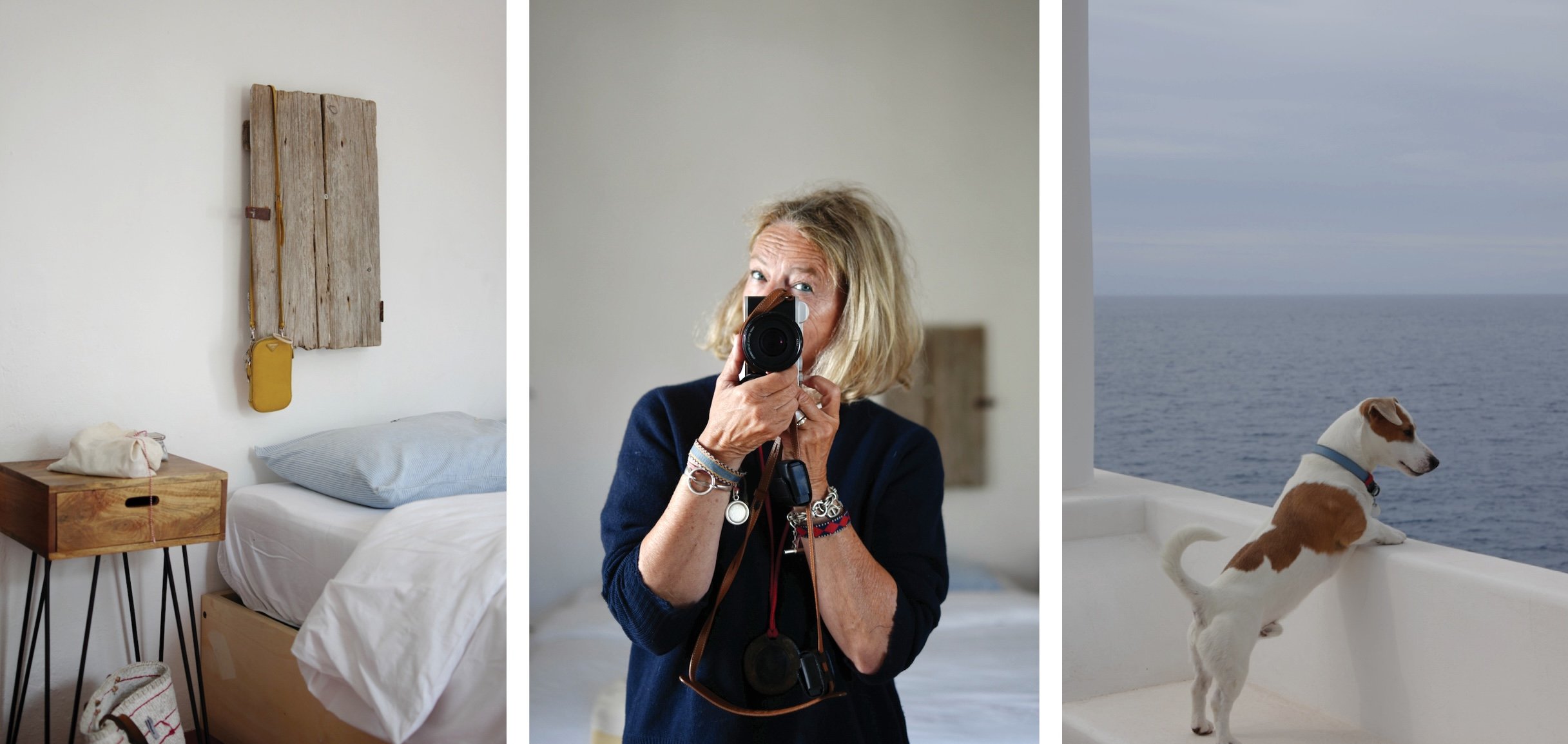Stromboli, 2025
THE ART OF ALMOST BELONGING
Stromboli—The Surest Way to End Up a Speck
"Gamberi. GAMBERI. Ultimo kilo. 20 Euro"
He yelled into the cabin of the jetfoil, his shoulder resting against the ship's metal bulkhead as he waved a plastic bag at eye level with his left arm, shaking it just enough to suggest the shrimps were alive. The gangplank screeched—metal against metal—as the ship rocked into the waves. The local butcher dropped a case of meat onto the luggage rack at the back of the cabin, careful not to smear the seats with his blood-stained apron. A steward amicably put an arm around his shoulders where the apron was still clean.
On the quay, a young woman in a Liberty Lines uniform observed the mercantile activity with practiced disinterest. Her navy cargo pants fit just a little too tightly, and the buttons of her white shirt strained at the seams. Seasonal indulgence was on display.
Italian uniforms have a single purpose: to impress.
A graying man in a padded gilet over a houndstooth jacket approached the shrimp vendor, shook the bag, peered inside, then fished a 20-euro note from his pocket. A group of American tourists, flaunting cheap plastic headphones, had followed the entire performance with rapt attention—exalted to witness a fragment of “real life” in Sicily, meticulously conjured on the travel agent’s website. They had temporarily bought into it. Their guide never stopped jabbering.
Getting to Stromboli is a rewarding journey. It’s an effort that requires motivation, patience, and a patchwork of transport modes that may even include a ride in the back of a spluttering APE. You don’t just arrive on Stromboli; you have to work to win it over.
We’ve been to Stromboli before.
It was a family Easter holiday, long ago. From the terrace of the house we had rented on Panarea, we watched the volcano spit red magma into the night. Stromboli’s lure was irresistible. A slow ferry carried us there and back, five hours later. The beach was black and empty. The fishermen tough and weathered.
We imagined Ingrid Bergman walking ahead of us in Roberto Rossellini’s Stromboli (1950), confused, along the same paths, past the same houses, barely changed. La terra dura—hard as the people who live there. Hard as igneous rock, cooled under the volcano’s regular heartbeat.
Stromboli hit a raw nerve. We vowed to be back. It took us 25 years.
There’s nothing like arriving by boat. The slow sway of a bare-metal hull reeking of gasoline builds anticipation for the arrival on firm land that's always busy and slightly unmoored. There are people waiting on the quay. Golf carts and APEs. The odd vendor approaching tourists. Everyone seems to know where to go, except us.
'Dove vai?' A blond young man asks. He's tanned and barefoot behind the wheel of a golf cart. You'd expect him on the beaches of Malibu or Ericeira, not here on Stromboli. Next to him, a man clutches a Rimowa suitcase between his knees, already hanging on with both hands. 'I'll drop you off,' he says when we give him the name of the owner from whom we rented the house. We hop into the back seats, facing backwards, as the cart races through streets that feel even narrower than we remembered. The houses have been restored and painted. The island seems friendlier now, but perhaps we’re the ones who’ve softened.
The first time, all we noticed was Stromboli’s hardness. But when you stay longer—and surrender to its slowness—you begin to sense its fluidity. When the rhythmic whoosh of the blowholes underneath the terrace reminds you of the sea's constant commotion.
When the deep rumble of the volcano tells you that the planet is fiercely alive. Not for you. Not against you. Just alive. In Stromboli, it's oddly reassuring to understand that in the grander scheme of things, we are just a temporary speck.
You start to meet the same people—specks like you—over again as the island’s intimate rituals begin to include you.
La Libreria sits underneath what is probably the largest tree on the island. The sun filters through the canopy onto the six decked tables in the garden as we're having Sunday lunch among the island's locals. Rosa, la nonna, joins the table where her daughter and son-in-law are already enjoying a bottle of white wine, their son, Max, in tow. Rosa is all dressed in yellow. We saw her on the boat when we arrived. Porters in Milazzo carried her purchases as she boarded, and an APE waited for her on the other side. With fiery red lipstick, rings on every finger, earrings, and a prominent Roman nose, she looks remarkably like my mother.
Old chapels need decoration, my mother used to say, and I am sure that Rosa would agree.
So would the film director at the other table. He's having lunch with some of his team. We noticed him the moment we arrived: mid-fifties, graying, unassumingly sophisticated, radiating with the charisma of someone who achieves greatness through natural authority rather than dominance.
He wears sunglasses and smokes tiny cigars between courses.
We're all visitors confronted by our mortality in this place: specks enjoying our lunch in the early summer sun on a volcano in the Mediterranean.
Some shine brighter than others. But one is simply fluorescent.
La Grande Bellezza.
The film opens with a quote from Louis Ferdinand Céline: "Travel is useful; it exercises the imagination. All the rest is disappointment and fatigue."
I guess he's been here before.
Subscribe to get full access to the newsletter and publication archives.


















